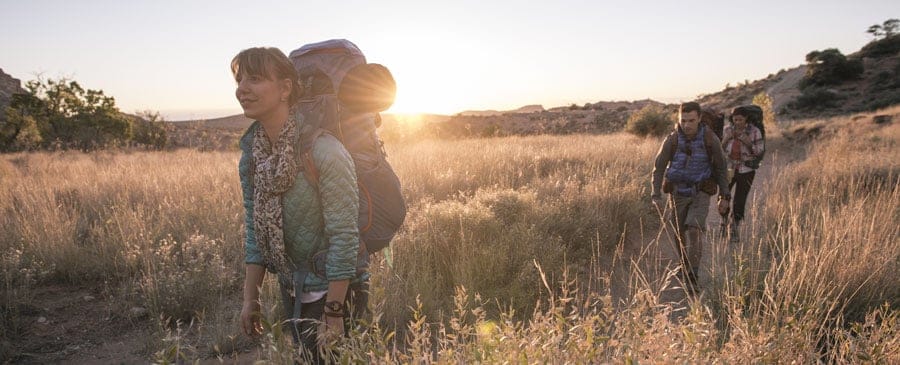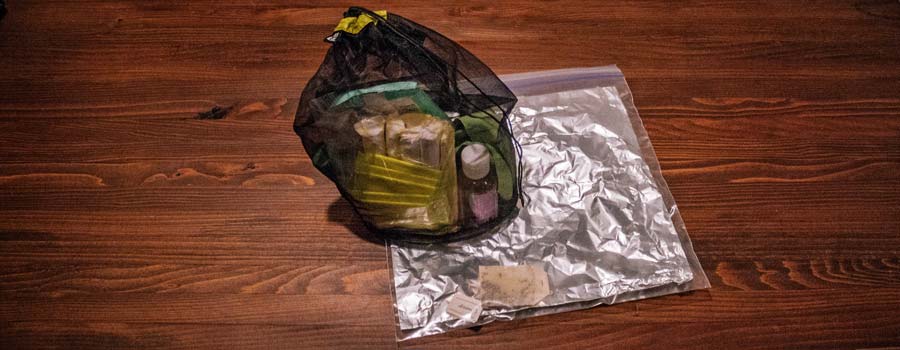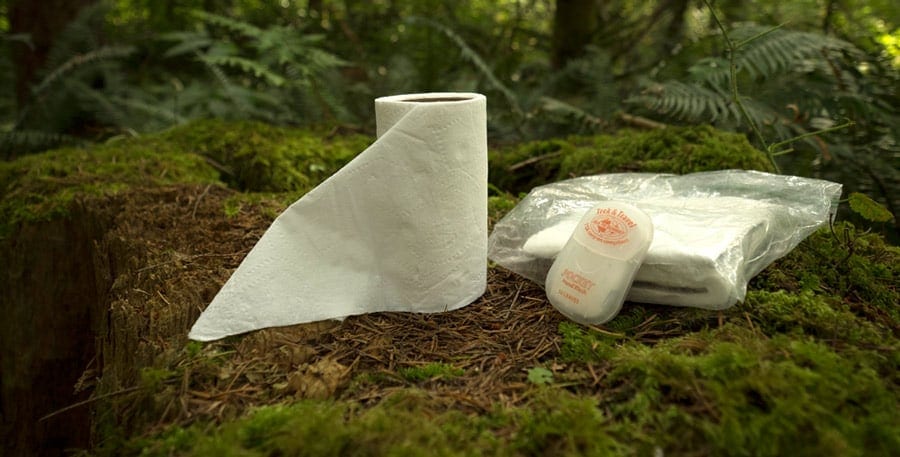You've got a great backpacking trip planned—but you know your period will start either right before or during the trip. What should you do?
After the first time backpacking with your period, you'll realize it's no big deal. And you can rest easy that the old notion that bears are attracted to menstrual blood turns out to be a myth. With a little preparation and knowledge, you won't have to think twice about heading into the backcountry at any time of the month:
- Know your options: Your main choices will be tampons vs. a menstrual cup. There are pros and cons to each.
- Organize your supplies: A "go kit" will help you keep your clean supplies organized and used supplies properly stored.
- Follow backcountry guidelines: Be sure you understand your backcountry hygiene basics and Leave no Trace principles.
Menstrual Cup vs. Tampons

There are two good options for managing periods as you backpack: the menstrual cup, and tampons and/or pads. Some even bring a menstrual cup plus a few tampons and pads or panty liners for good measure. This article will cover the pros and cons of each.
Menstrual Cup
This is a flexible silicone or rubber cup you insert to catch menstrual blood. Many companies make them. You buy one and reuse it, often for years. Brands may have different sizes based on your age, flow amount or childbirth history.
Once you insert the cup—it's a different process from inserting a tampon so read the manufacturer's instructions—you can keep it in for up to 12 hours. Then you remove it (again, follow instructions) and empty the contents into your "cat hole" (the hole you dig for bathroom use during a backpacking trip).
After you empty out the cup, rinse it with clean water if possible, or wipe it out with tissue, and reinsert it. You can do this as often as you need to. Some people even pee on the cup to rinse it while on the trail, then wash it in camp. You may prefer to use the cup only at night or only during the day. Typically a cup can be boiled for a thorough cleaning. Most come with a small drawstring storage bag made of breathable cotton.
Pros:
- A cup is reusable and lightweight, so you only have to bring one item instead of multiple tampons/pads that get heavy after use.
- It eliminates waste, making it more environmentally friendly than tampons.
- You're not exposed to bleach, dioxin or fibers found in some tampons.
Cons:
- Inserting and removing a cup takes practice—it's important to practice at home and use the cup during one or two periods before you go backpacking.
- Lack of soap and water to clean your hands and the cup can be a deterrent for some.
Tampons and/or Pads
If these are what you're comfortable with, and you don't like the idea of or can't get the hang of the menstrual cup, then by all means stick with these.
Pros:
- You can bring tampons without applicators to take up less space.
- You know the routine and it works for you.
Cons:
- You have to carry them in, which takes up room and ounces in your pack.
- And, you have to pack out every single used tampon and pad in a special waste bag. (It's important not to bury a used tampon or pad in your cat hole because animals dig them up.)
How to Carry and Store Your Hygiene Items

Once you've decided what hygiene items you're going to bring backpacking, you can make a "go kit." This is a sack containing a clean bag to carry products in, and a waste bag to carry used items out.
By keeping all your items together inside the larger kit, you just need to pull out one bag when you reach into your backpack for your supplies. Some, however, prefer to keep the two completely separate.
Clean bag: For your main bag, start with an opaque, ultralight 4-liter to 8-liter roll-top stuff sack or dry bag. Then, add the following:
- Quart-size zip-top bags (about a half dozen if you're using tampons/pads). A couple will hold your clean tampons/pads and the rest will go into your waste bag to hold the used items.
- Hand sanitizer (small bottle)
- Pre-moistened wipes in a zip-top bag (1-3 per day), or toilet paper removed from the cardboard roll
- Biodegradable soap (small amount for washing hands and underwear)
Waste bag: Zip-top bags are the best way to carry out used tampons, pads and toilet paper to contain odors. (Tip: To further help with odor control, include a dry tea bag or ground coffee.)
Here are three ways to make a waste bag from a gallon-size zip-top bag:
- Completely line the bag with aluminum foil so the contents remain private.
- Cover the bag with duct tape; this weighs more, however.
- Instead of foil or tape, put waste items into quart-size zip-top bags and stow them inside the gallon-size waste bag.
Backcountry Hygiene Tips for Your Period

- Wash your hands with soap and clean water when you're in camp, and use hand sanitizer while on the trail.
- You can bring pre-moistened wipes to clean your hands before and after inserting or removing the menstrual cup or tampons. (While some wipes are made especially for cleaning out the menstrual cup when you can't rinse it, some cup manufacturer's advise against using wipes or sanitizer on the cup itself.)
- Bring along a few nitrile medical gloves to use when inserting or removing a menstrual cup or tampon to avoid getting your hands messy. They're good to have in your first-aid kit even if you don't use them, but they do create extra waste to manage. (Put them in your waste bag and carry them out with you.)

